
That magical moment when your sleeping baby breaks into a smile can melt even the toughest heart. But what’s really happening behind those closed eyelids?
Those sleepy grins aren’t just adorable—they’re actually part of your baby’s brain development.
When babies smile during sleep, they’re processing new connections and sensations as their nervous system matures. These unconscious expressions differ from the social smiles they’ll develop when awake.
Understanding the difference between gas-related grimaces, dream smiles, and true reflex smiles can help you better interpret your child’s needs.
From cultural beliefs to physical comfort, many factors influence when and how babies display these precious sleep smiles.
Clarifying Types of Newborn Smiles
Newborn smiles can be confusing, but they offer early glimpses into a baby’s development. Understanding the difference between gas-induced and reflex smiles helps parents respond more accurately.
As babies grow, their smiles become more intentional and emotionally driven.
Gas or Reflex?
Babies make faces that look like smiles when they have gas. These aren’t real smiles. They happen when air moves in the tummy. True reflex smiles come from the brain.
They look different – the eyes light up more. Telling them apart helps them know what the baby needs.
Early vs. Mature Reflex Smiles
- Baby smiles change during the first month
- Early ones are short and happen at random
- Later smiles last longer
- They show up more when the baby is fed and happy
Genetics and Parental Influence
A baby’s ability to smile is influenced by both genetics and the emotional environment created by caregivers. Parents who engage with their baby through eye contact, gentle speech, and warm expressions often notice more frequent smiling.
These early interactions help shape a baby’s social and emotional development.
Inherited Tendencies
Some babies smile earlier than others, and this might run in families. Parents who smile early often have babies who do, too.
The facial muscles and brain connections can be passed down. Watching family photos might show similar timing in smiles across generations.
Calm homes help babies feel safe. Babies notice when their parents breathe slowly. Try playing soft music and Taking breaks when feeling stressed.
Parent’s Emotional State
Peaceful homes help babies feel safe and relaxed. When parents breathe slowly and stay quiet, babies notice and respond positively.
Try playing soft music throughout the day to create a soothing atmosphere. Remember to take breaks when feeling stressed – stepping away for a few minutes helps you reset.
Your emotional state directly affects how your baby feels, so finding small ways to stay calm benefits everyone.
Cultural Variations in Infant Smiling
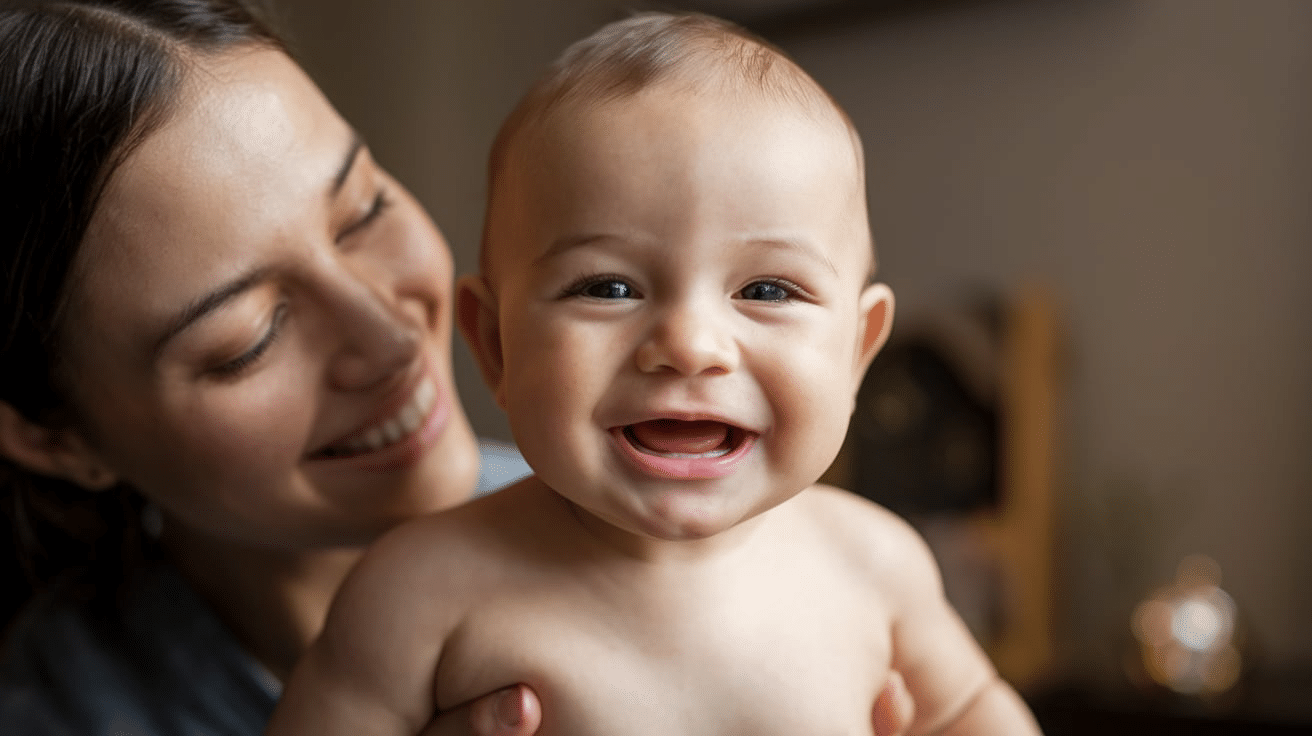
Different Cultural Interpretations
People around the world see baby smiles differently. Some think early smiles mean good luck, and others believe babies are talking to angels.
These beliefs change how adults react to smiles. Some cultures celebrate first smiles with special meals or gifts.
Cross-Cultural Parenting Practices
Parenting styles vary widely across cultures, especially when it comes to bonding and soothing techniques that encourage baby smiles.
In some cultures, caregivers use melodic singing or lullabies to evoke joy and comfort, while others rely on exaggerated facial expressions to connect.
Holding babies upright for longer periods is more common in certain regions, promoting closeness and social engagement.
Gentle rocking techniques also differ, with some cultures using rhythmic body movements and others favoring cradle-like motions.
These diverse practices highlight the universal desire to nurture happy, emotionally secure babies through unique, culturally rooted methods.
Distinguishing Between Dream Smiles and Reflex Smiles
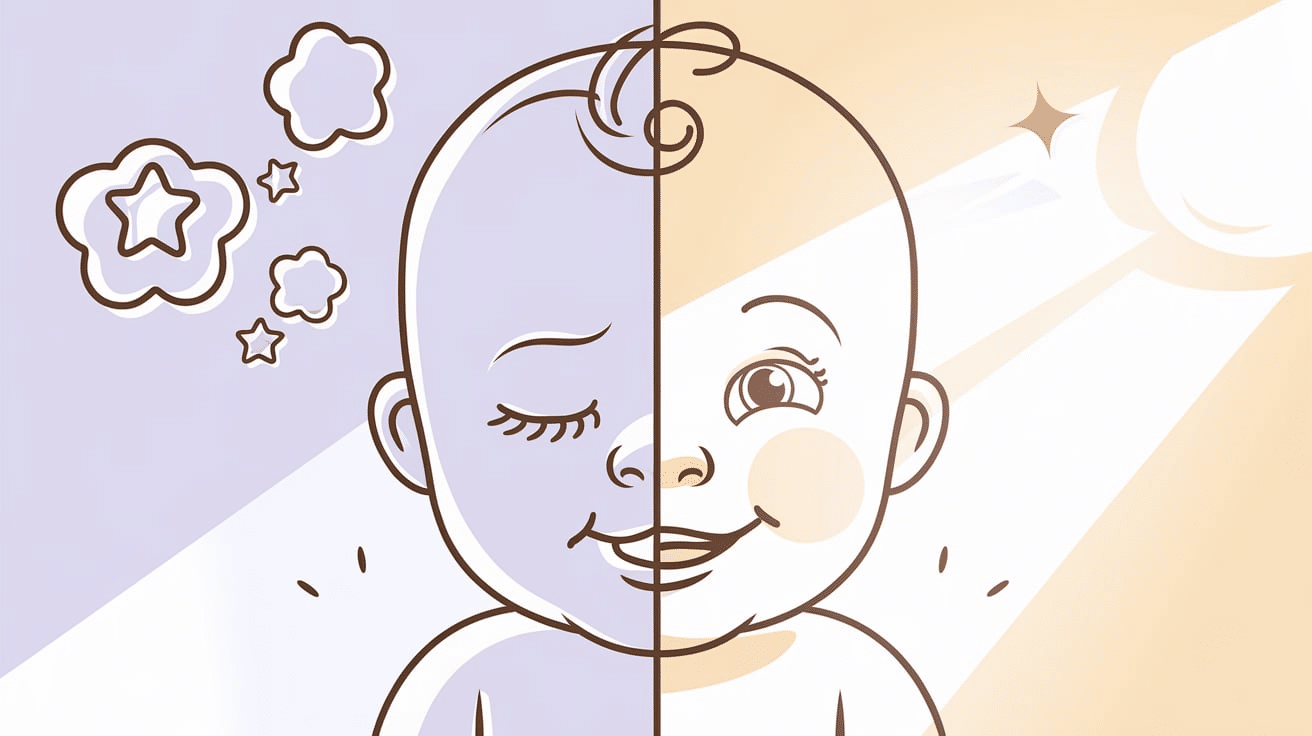
Dream smiles are brief, gentle expressions that often occur during active sleep. Reflex smiles, on the other hand, are automatic responses not tied to emotion or dreaming.
Identifying Dream Indicators
Babies smile during sleep as their little brains develop and grow. These sleep smiles look different from those they show when they’re awake.
Watch for quick eye movements under their closed eyelids – this shows they’re dreaming. You’ll notice these special smiles come with small twitches and sometimes funny expressions, too.
All these sleep movements are perfectly normal and actually show healthy brain development. These magical moments let you peek into how your baby’s mind is learning and making new connections even while sleeping.
Normal Sleep Twitching
Small jerks are completely normal during baby sleep. You might notice their mouth twitching into what looks like a smile or their tiny arms and legs jumping slightly.
These movements typically happen during light sleep periods when the brain is active. These natural twitches are part of healthy development and nothing to worry about.
Skin-to-skin contact and Smiling
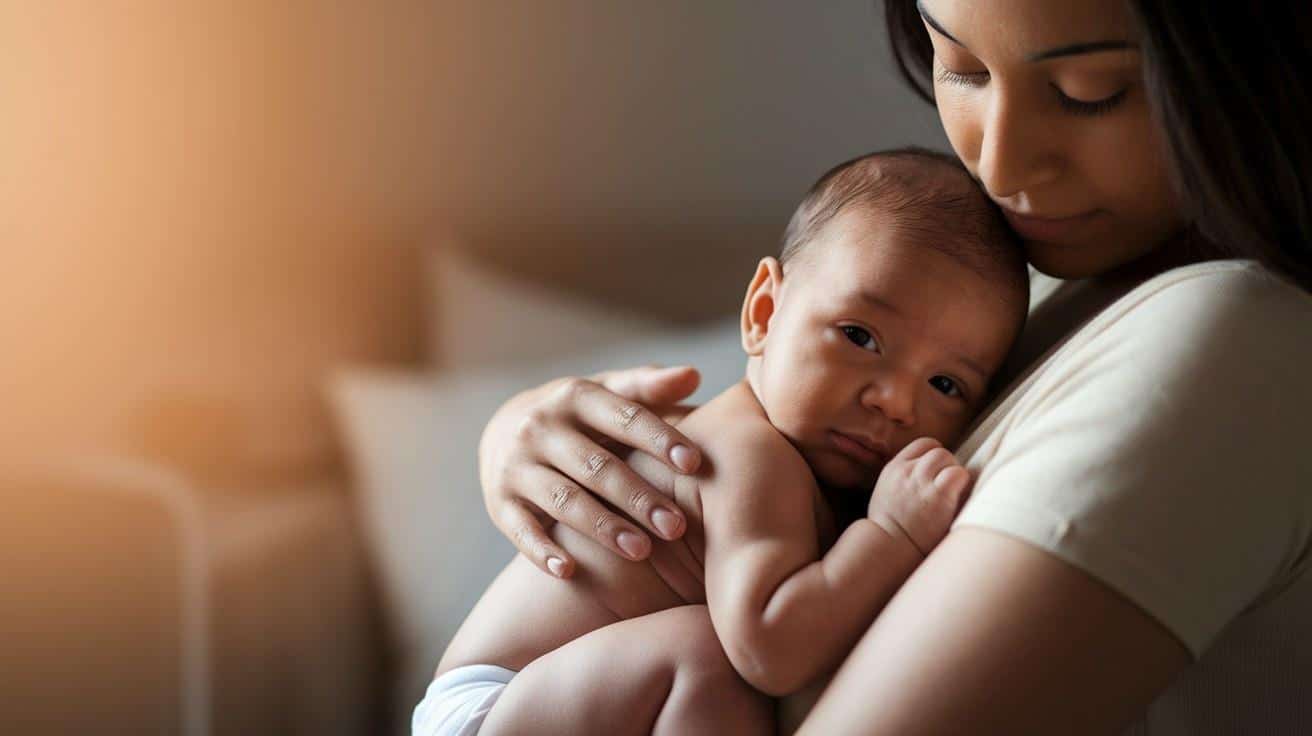
Bonding Through Touch
Holding a baby against bare skin helps them feel safe. This calm feeling can lead to soft smiles. The warmth and smell of a parent also helps babies relax.
Daily skin time builds strong brain connections. Babies held this way often smile more.
Recommended Skin-to-Skin Best Practices
- Keep the room warm enough
- Use a light blanket over the baby’s back
- Try 20 minutes at least twice daily
- Make sure baby’s nose isn’t covered
Physical Comfort
A comfortable baby is a happy baby, and smiles are often a sign that their basic needs are met. Whether it’s a clean diaper, a full tummy, or a cozy blanket, these small comforts can lead to big grins.
Babies also respond positively to soothing motions like rocking or gentle bouncing, which help them feel secure.
Creating a calm, nurturing environment supports not only better sleep and mood but also encourages those sweet, spontaneous smiles that signal everything is just right in their little world.
Gas and Digestive Comfort
Gas and digestive discomfort can cause babies to grimace or squirm, making it hard to tell if they’re smiling. When their tummy feels better, true smiles are more likely to appear.
Techniques like gentle tummy massages or bicycle leg movements can ease gas and promote comfort. A content baby often shows it with relaxed, joyful expressions.
Swaddling and Temperature
Wrap the baby snug but not too tight in a cozy swaddle. Keep the room between 68 and 72 degrees for perfect sleeping comfort.
Watch for signs like a sweaty head or cold hands to know if the baby is too warm or cool. A comfy baby shows calm facial muscles and relaxed features instead of tension or frowning.
Early Social Development: Eye Contact and Vocal Cues
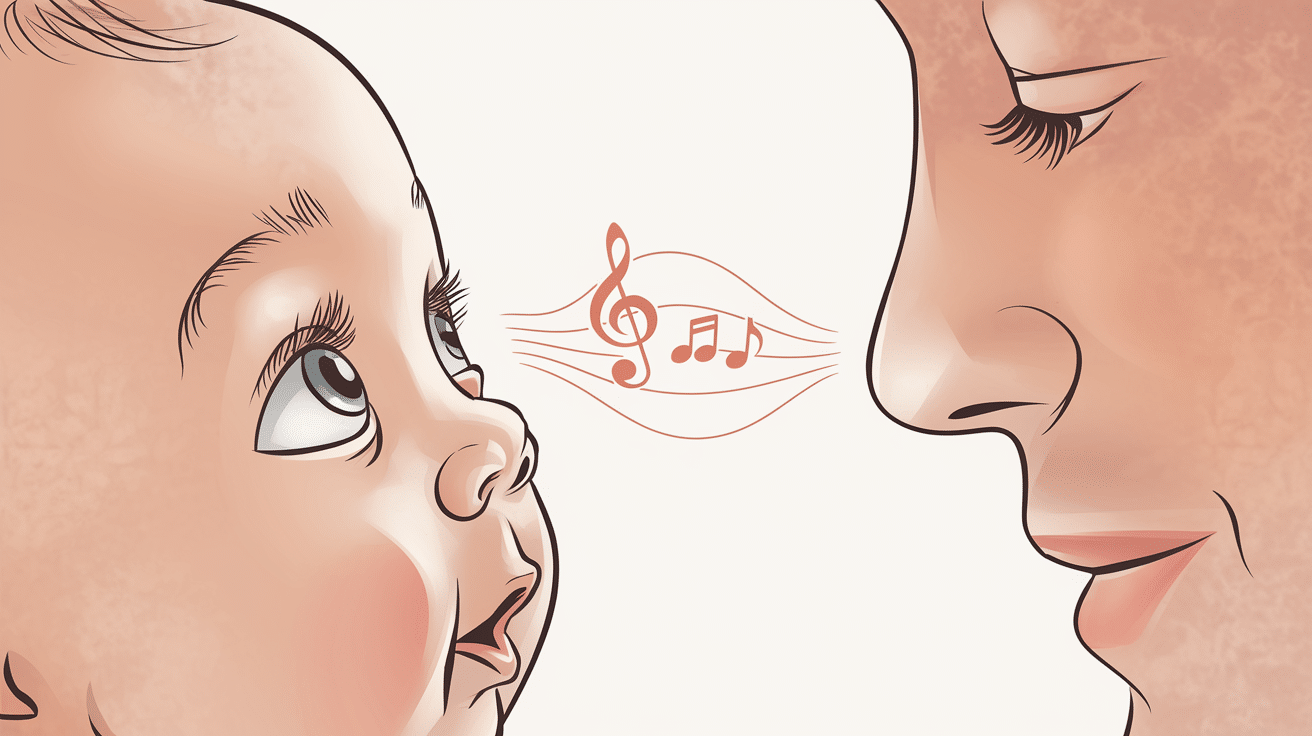
Recognizing Caregiver’s Voice
Newborns can recognize familiar voices, especially those they heard in the womb. A soft, soothing tone often brings out early smile-like reactions.
When paired with eye contact and a loving face, these sounds can spark even more joyful expressions.
Eye Gaze and Light Sleep
- Baby might peek eyes open during naps
- A small smile might follow eye contact
- Keep lights low during these moments
- Let baby decide to wake or drift back asleep
Practical Ways to Document Smiles
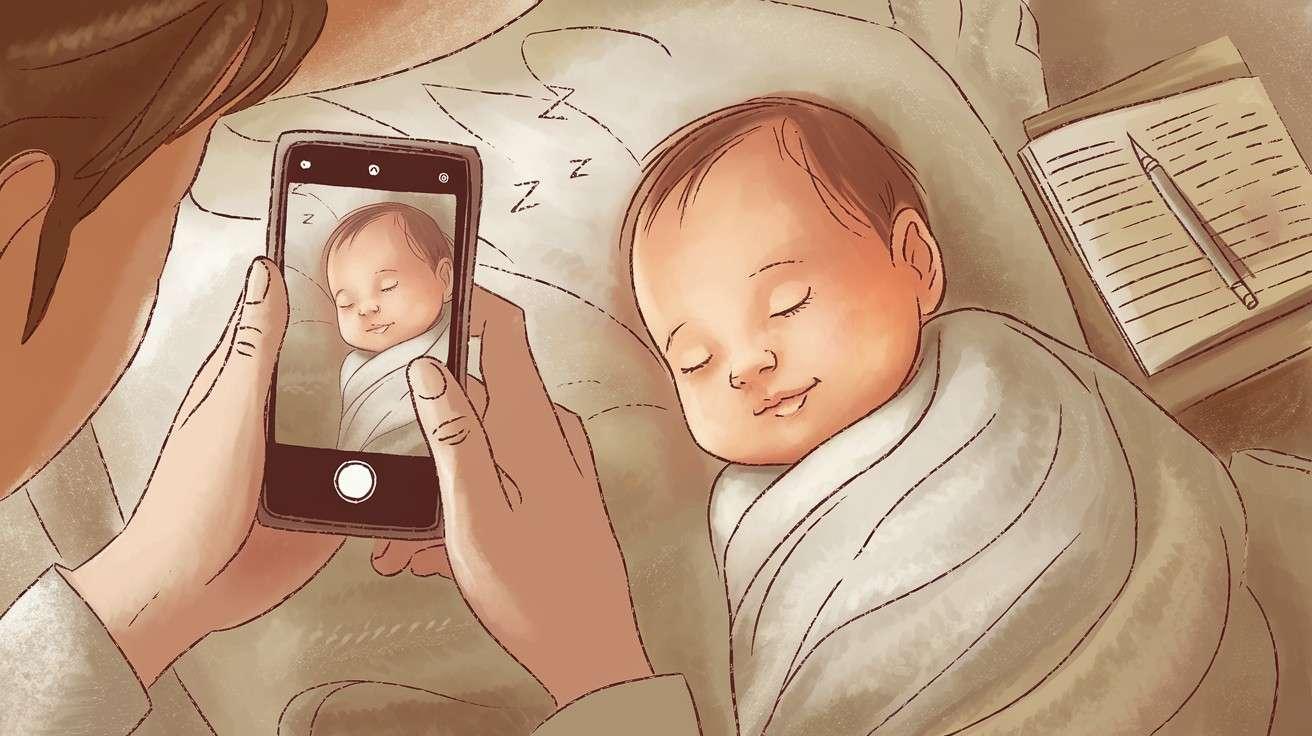
Creating a Milestone Tracker
Write down when smiles happen. Note the time of day and what was happening.
This helps spot patterns. Maybe morning is prime smile time. A simple notebook works great. Looking back shows how a baby grows week by week.
When and How to Photograph
- Keep phone or camera ready but silent
- Avoid bright flashes
- Take a video to catch brief moments
- Share with family who live far away
Encouraging Safe Sleep Practices
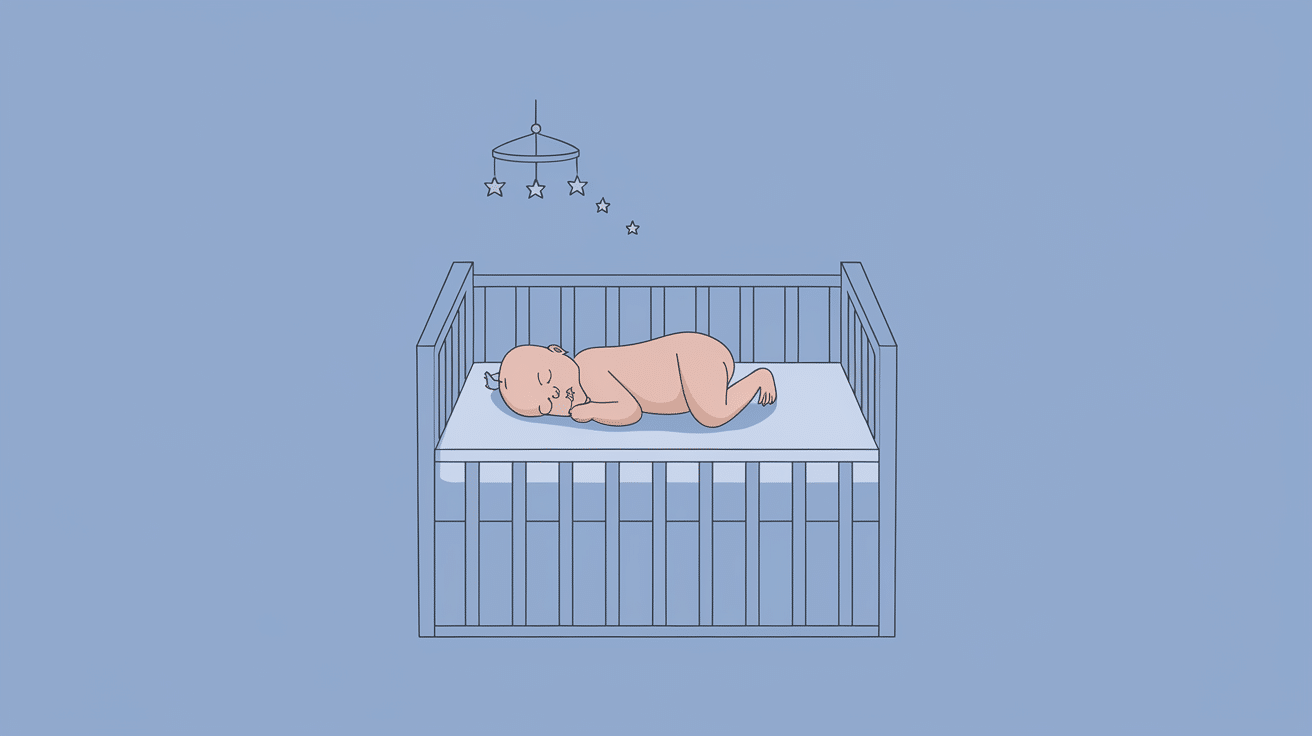
Positioning
Always place the baby on its back for sleep. This is the safest way. Keep the crib clear of blankets, toys, and pillows. A firm mattress with a fitted sheet works best. Babies who sleep well often smile more during awake times.
Signs of Healthy Sleep Patterns
- Feeding well when awake
- Growing at a steady rate
- Short naps throughout the day
- Longer stretches at night as they grow
When to Seek Professional Input
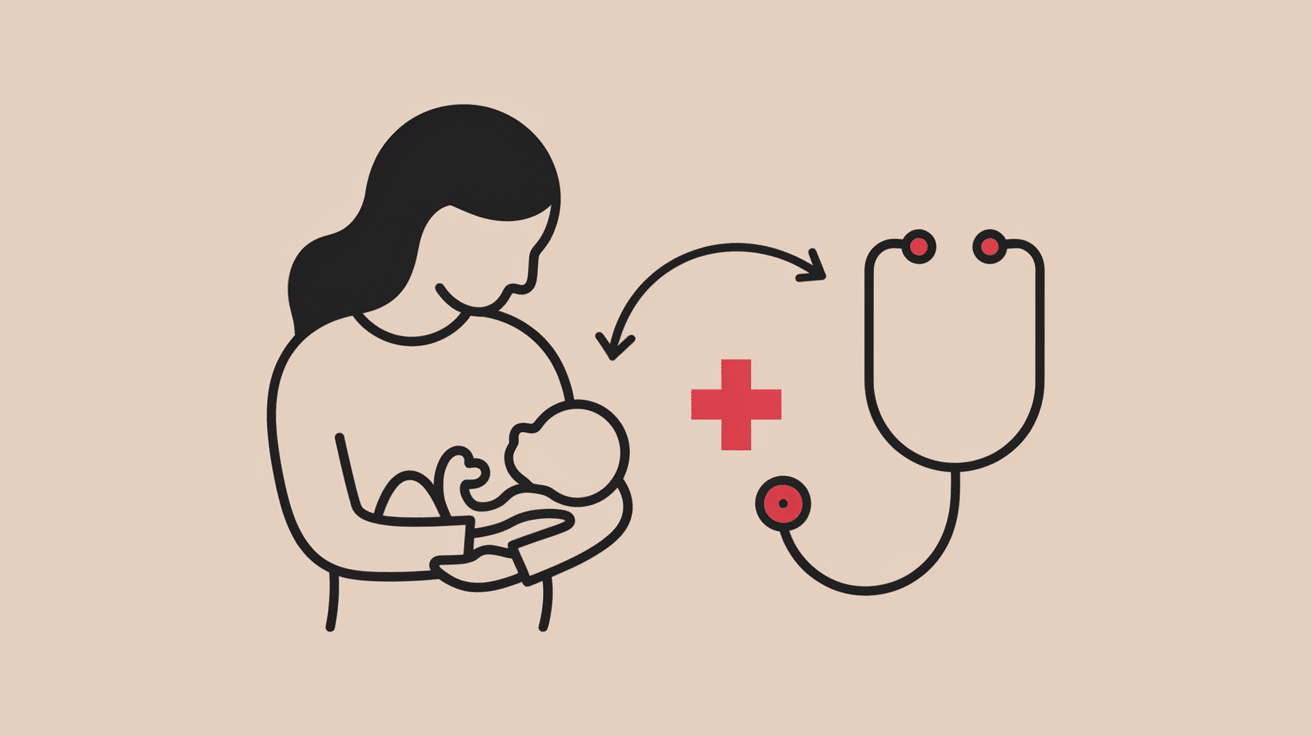
Consistency in Smiling or Lack Thereof
Babies should show some smiles by 2 months. If a baby never seems to smile, talk to the doctor. Not all babies develop at the same speed, but a total lack of faces is worth checking.
Trust your gut feelings about the baby’s progress.
Special Circumstances
- Babies born early need more time
- Some medicines affect how alert a baby feels
- Brain differences might change smile timing
- Early help leads to the best results
Final Thoughts
Sleep smiles are more than just cute photo opportunities—they’re windows into your baby’s developing brain.
From simple reflex reactions to dream-related expressions, these unconscious grins evolve as your baby grows.
While some cultures see special meaning in these moments, science shows they’re normal parts of healthy development.
By creating a comfortable sleep environment, practicing skin-to-skin contact, and understanding your baby’s physical needs, you can nurture both peaceful sleep and genuine smiles.
Document these fleeting moments while they last, but remember that a consistent lack of facial expressions for two months warrants a conversation with your doctor.
Every baby develops uniquely, with those precious sleep smiles marking just one milestone on their incredible trip.
